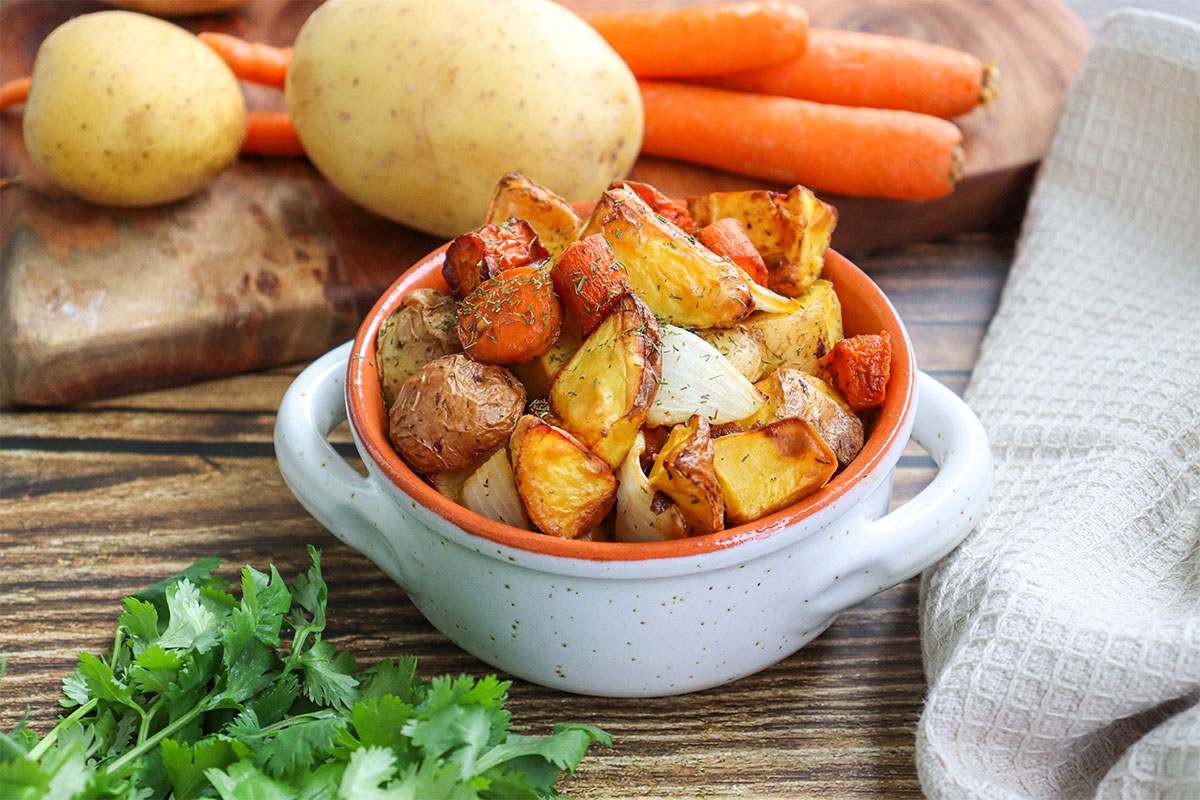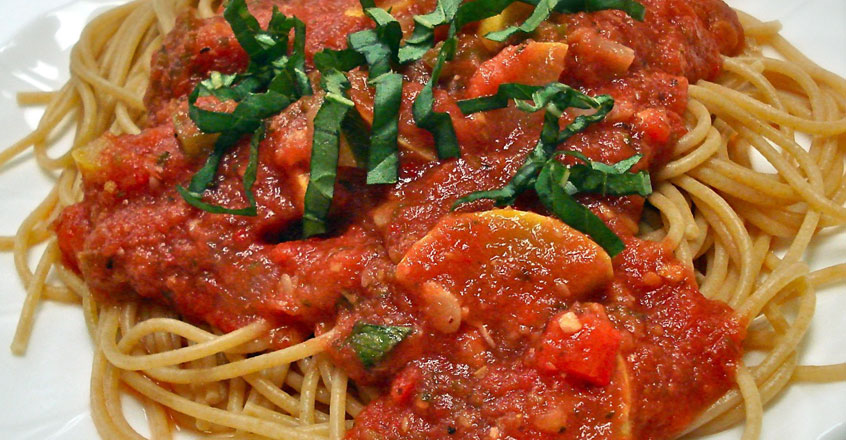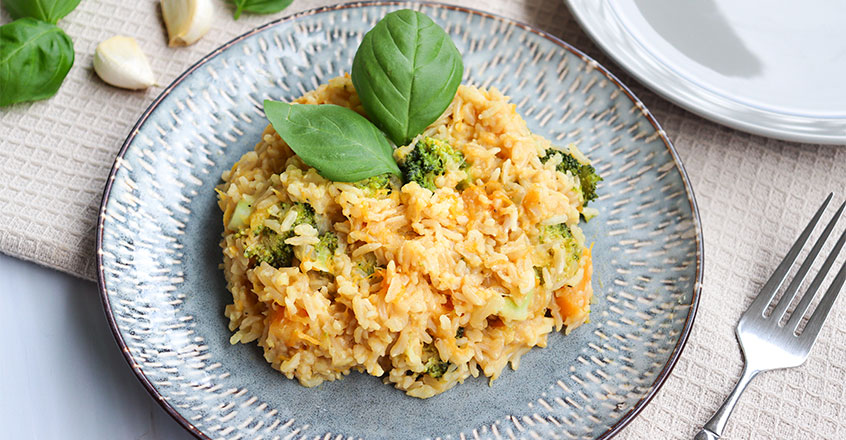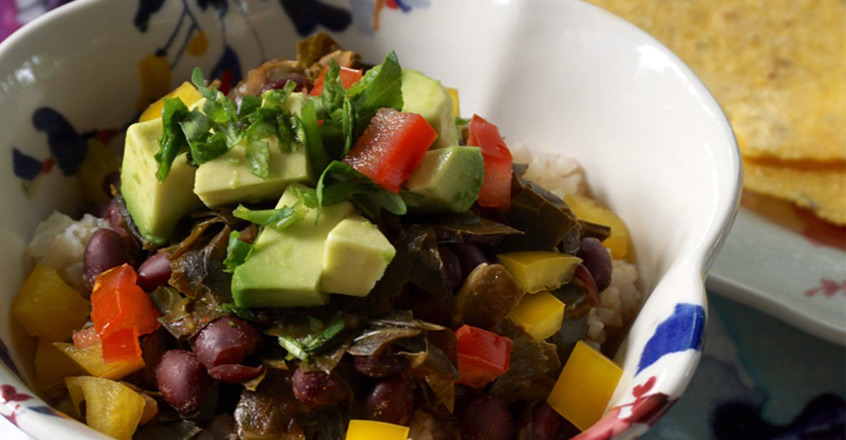

So, you are convinced. Eating a diet rich in whole plant-based foods makes brilliant sense for your personal health, the welfare of animals and for the future of our planet.
It’s time to dive in, but where do you start? How can you make meal preparation easy and delicious? And how in the world can you shop for groceries without straining your wallet?
It can be simpler than you may expect.
In fact, armed with a few clever strategies you might just be surprised that you can eat more delectably than ever on a very modest budget.
Let’s consider eating plant-based on a budget two ways. How to get the most nutrition for your dollar and how to get more satisfaction from your nutrition.
The answer to both questions can be found in a meal made with both greens and starches. Since greens provide the most nutrients per calorie, they’re the ideal addition to a meal based on satisfying, fiber-rich whole grains, beans and starchy vegetables.
Once you’ve created a useful list of plant-based grocery items, make copies to use each week. Save yourself the time it takes to write that same list again and again.
Shopping List
| Leafy Greens | Other Vegetables |
| Beans & Legumes | Whole Grains |
| Fruits | Nuts & Seeds |
Fruit: Look for quality and value, such as apples, pears, oranges and bananas.
Salad greens: Check out all varieties! Try romaine or leaf lettuce, baby spinach, mixed spring greens, arugala or baby kale.
Leafy greens: Select one or two bunches of greens to steam or dry sauté, such as collard greens, kale, or Swiss chard. Comb the produce section and select the freshest greens available. Often the most abundant greens are the best value. Experiment with less familiar varieties, too. Make buying and eating plenty of fiber-rich greens non-negotiable!
Cruciferous vegetables: Scout for the best value in cruciferous vegetables to add to your grocery cart, like broccoli, Brussels sprouts, cauliflower and cabbage. If you believe you are not a fan, be sure to give these another try and include them in your diet.
Potatoes and sweet potatoes: From fingerlings, to russets, to Japanese sweet potatoes, the varieties are endless. Grab a larger bag for better value.
Soups and stews: Don’t forget celery, carrots, garlic and onions.
Herbs and spices: Cilantro, basil, parsley and other herbs are highly flavorful additions to your recipes. Growing herbs at home can be very satisfying too.
Explore: As your comfort level increases, promise to try lots of new vegetables and fruits in the weeks ahead.
Consider organic vegetables and fruits when possible.
Which foods are both health-promoting and extremely satisfying?
Spoiler alert! The answer is starches like whole grains, beans, and starchy vegetables.
They’re more than just good for you…they’re actually the perfect source of energy for humans. The fact that they also happen to be among the least expensive foods in the world is a tremendous bonus.
Consider that a one-pound bag of rice makes at least six or seven cups cooked, often for under $2. A ten-pound bag of potatoes costs about $4, and two cups of dried lentils will yield approximately six cups after cooking, for around $1.
Of course, you won’t be eating these foods by themselves everyday, but you can see that with 10 pounds of baked potatoes, along with 3 quarts of nourishing cooked lentils and rice (for example) a small grocery tab of $7 can convert into lots of family meals.
Be sure to stock up on rice, beans, potatoes, oats, barley and other wonderful starchy vegetables. Satisfying and affordable – starches are a great way to watch the pennies while stretching healthy ingredients into nutritious, delicious meals.
Familiar and comforting, whole plant starch-based foods are probably already your favorites. This is great news, since this category includes whole grains, like barley, brown rice, quinoa, oats and bulgur wheat; legumes, including chickpeas, black beans, pinto beans, kidney beans, and lentils; and starchy vegetables, such as potatoes, sweet peas, corn, sweet potatoes and butternut squash.
This Easy Buddha Bowl is one great way to throw together an easy lunch full of nutritious greens and satisfying starches.
Shop in the Frozen Foods Section
Choosing frozen vegetables and fruits is a great way to build meals on a budget. In case you’re wondering, the nutritional profile is almost identical to fresh and it can also be easier.
The timesaving convenience of frozen vegetables and fruits is hard to overstate, since all trimming, washing, and chopping has been done for you. Plus, there’s virtually no waste.
Prepare Meals at Home
Plan to prepare meals at home whenever possible.
Pack lunches for work with leftovers from the night before and bring plenty of snacks from home so that you can control what you eat from morning ‘til night.
If restaurants are where you gather with friends, this may be a big change, but it’s an important one. Restaurants are hard on your budget, and the worst for controlling the quality on your plate.
Instead of meeting at a restaurant, how about inviting friends over to your kitchen? Try making something scrumptious to share, as you expose your friends to the virtues of healthy eating.
However, when you must patronize a restaurant, ask your server plenty of appropriate questions and order judiciously. Be certain that what you order is something that meets your whole food, plant-based requirements.
Don’t allow anyone (including family and friends) to derail your resolve, sacrifice your waistline, your budget or compromise your health.
Your Plant-Based Kitchen Equipment
| Must Haves | Great Additions | Fabulous Luxuries |
|---|---|---|
| Cutting board(s) | Slow cooker(s) | High-speed blender (Vitamix) |
| Chef’s knife | Rice cooker | Electric pressure cooker (Instant Pot) |
| Paring knife | Blender / food processor | Ice cream maker (YoNanas) |
| Baking sheet(s) | Immersion blender | |
| Large heavy skillet | Muffin pans | |
| Soup pot (dutch oven) |
Cook in Batches
Even if you aren’t typically big on meal planning, preparing a few ingredients ahead can be very helpful. It’s one of the secrets to being happily plant-based, controlling the quality of each meal and accomplishing both affordably.
Having the right food on hand can make the difference between struggle and success. The answer for many people is to simply set aside some in-the-kitchen time when you can (for many this is on the weekend) to ensure that you will be ready for the week ahead.
For example, allot a couple hours or so on a Saturday or Sunday. Many meals can cook simultaneously and with very little supervision. Whenever you cook, make enough for an extra meal or two. After preparing a few ingredients or recipes, you’ll be ready to mix and match for quick, healthy meals all week long.
#1 Make a large batch of oatmeal, like this Baked Steel Cut Oatmeal, for an easy answer to breakfast all week long.
#2 Roast a pan full of vegetables, like these delicious Roasted Carrots, Potatoes, and Onions.

Roasted Carrots, Potatoes and Onions
#3 Prepare a batch of brown rice (or other grain) in either a rice cooker or on the stove.
#4 Boil, roast, or bake several potatoes or sweet potatoes.
#5 Steam a bunch of chopped leafy greens, like spinach, kale or collards.
#6 Clean and chop lettuce and other salad ingredients to grab for easy lunches.
#7 Simmer a large pot of dried beans, or a batch of hearty soup, like this Best Split Pea Soup to use throughout the week.
Try repurposing one ingredient or dish into another, for example use the black beans you prepared to top a green salad, stuff into warm tortillas, or ladle over brown rice. You can make loads of food in the space of an afternoon, to start the week in terrific shape.
Cooking beans from scratch delivers a tremendous savings over canned. That’s because one can of beans is usually at least the same price (and often double or triple) that of a one-pound package of dried beans.
After cooking, 1 pound of dried beans will yield about six or seven cups, or approximately the amount you’d have by opening four cans of cooked beans and without the added salt.
In other words, canned beans are at least four times more expensive than dried beans.
And cooking them could not be easier than with this tried and true method. Just cook overnight in a slow cooker. No soaking required!
Easy Beans Slow Cooker Instructions:
To prepare beans in a slow cooker, sort and rinse a one-pound bag of dried beans.
Place beans in a medium or large slow cooker, and add enough water to reach about 3 inches above the beans. Cover and cook on low setting overnight, or for approximately 8 hours. Test for tenderness, and season with salt (optional) and pepper at the end of cooking time, if desired.
Refrigerate beans for dishes you’ll be making over the next few days. Freeze the rest of the cooked beans for use in recipes, in 1 ½ cup portions, using zippered plastic bags. This will make it easy to swap out a bag for one can of beans anytime. Remember to label and date the contents before freezing.
Save your vegetable scraps – the stuff you usually throw away or compost (like onion and shallot skins, leek tops, carrot peels, and celery leaves).
Make sure the vegetables are clean first, of course. Then just store those scraps in a zippered plastic bag in the freezer. Continue adding to the bag until you have accumulated 4 or 5 cups of vegetable scraps. (You may want to avoid cruciferous vegetables, such as cabbage, Brussels sprouts, broccoli and cauliflower, because they can create an overpowering and bitter broth.)
To make the broth, place the frozen vegetables (approximately 4 or 5 cups of vegetable scraps) in a 4-quart stockpot. Cover with cold water and bring to a boil. Reduce heat and simmer uncovered for around 45 – 55 minutes.
Turn off the heat and season to taste, including fresh or dried herbs, if desired. Allow to cool.
Strain and toss the “spent” vegetables using a fine mesh strainer or colander. Press remaining liquid with the back of a spoon to make sure you collect every drop of broth.
Store broth in smaller batches (in refrigerator or freezer) for use in your favorite recipes.
One secret to successfully navigating healthy food choices is to ensure that you have great options available at all times. Many (or most) of us simply cannot find time to cook every single day. That’s where your freezer is worth its weight in gold.
Freezing extra cooked grains, beans, soups, and veggie burgers make it a snap to throw together a hearty meal.
Once you’ve made that big pot of brown rice, lentil soup, or black beans, allow everything to cool. Then package serving size (or family-size) portions into freezer-safe containers. Label, date and scoot those goodies into your freezer for another day.
Build variety into your freezer inventory by changing it up. If you made brown rice and black beans last week, make barley and lentils next week. This method guarantees an enviable freezer assortment in very short order.
Remember to make room for the next generation of newly prepared ingredients and homemade meals. As you cycle freshly packaged items into the freezer, think about what you can thaw this week to use for upcoming meals.
The more you practice these tips, the easier it will be to have great plant-based meals on a budget, day after day.
#1 Generic vs. Name-Brand
Look for the best values in store-brand staples like oats, rice and beans. Compare ingredients with more expensive brand names to be sure they pass your inspection.
#2 CSAs
Consider joining a CSA (community supported agriculture) to receive the very freshest locally grown vegetables and fruits all year long. You may need to do a little research, but some CSAs offer shares (delivered to your door) for around $30 per week.
#3 Stop Impulse Shopping
Avoid grocery shopping when you’re hungry and think twice before adding anything to your cart that wasn’t on your list.
#4 Drink Water
Bring water and beverages from home, rather than digging into your wallet everytime you want a drink. Invest in a Thermos or two instead.
#5 Late-Week Audit
Re-assess the inventory in your refrigerator as the week progresses. Have you used most of the vegetables, beans and grains that you prepared? If you end up with more than you will likely use, it’s time for a new plan. Can you can throw leftovers into a pot of soup or dry-sauté the ingredients together for whole grain burritos? If not, consider packaging up any extras while still fresh to store in the freezer for another time.
How can you turn all of this information into penny-pinching meals? Here are a few extremely delicious ways to get started.

Pomodoro Sauce With Summer Vegetables

Brown Rice Risotto With Caramelized Onions, Squash and Broccoli

Black Beans and Greens Over Rice
Your new whole food, plant-based diet may help save you so much more than you imagined – directly and indirectly. This eating pattern has been shown to prevent and reverse many chronic diseases, reduce expenses for medical procedures and prescription drugs, increase personal productivity and quality of life. So spend less, eat well and love your food!
Copyright 2024 Center for Nutrition Studies. All rights reserved.